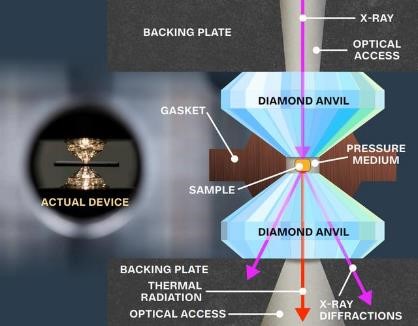PREVIOUS
First room-temperature superconductor
October 30 , 2020
1491 days
872
0
- Scientists have reported the discovery of the first room-temperature superconductor, after more than a century of waiting.
- The superconductor was formed by squeezing carbon, hydrogen and sulphur between the tips of two diamonds and hitting the material with laser light to induce chemical reactions.
- At a pressure about 2.6 million times that of Earth’s atmosphere, and temperatures below about 15° C, the electrical resistance vanished.
- However, the new material’s superconducting superpowers appear only at extremely high pressures, limiting its practical usefulness.
- Superconductors transmit electricity without resistance, allowing current to flow without any energy loss.
- When superconductivity was discovered in 1911, it was found only at temperatures close to absolute zero (−273.15° C).

Leave a Reply
Your Comment is awaiting moderation.


